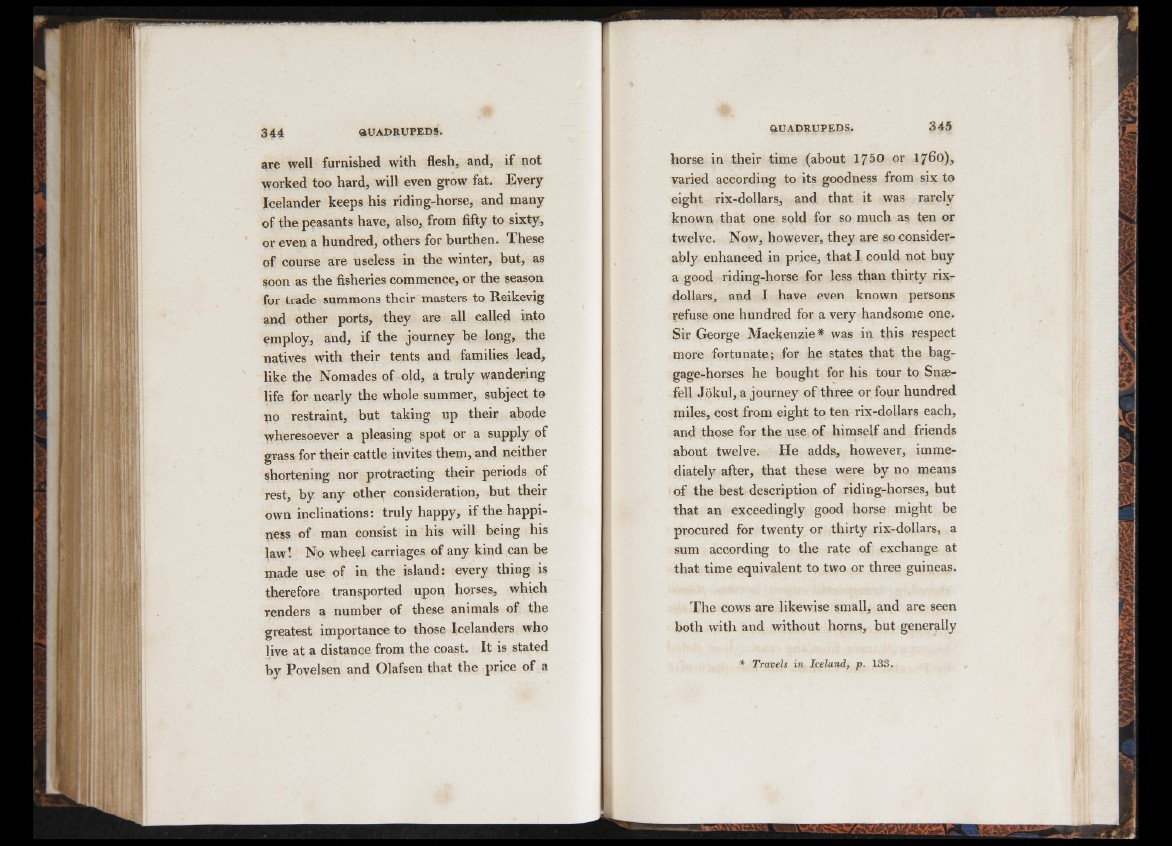
are well furnished with flesh, and, if not
worked too hard, will even grow fat. Every
Icelander keeps his riding-horse, and many
of the peasants have, also, from fifty to sixty,
or even a hundred, others for burthen. These
of course are useless in the winter, but, as
soon as the fisheries commence, or the season
for trade summons their masters to Reikevig
and other ports, they are all called into
employ, and, if the journey be long, the
natives with their tents and families lead,
like the Nomades of old, a truly wandering
life for nearly the whole summer, subject to
no restraint, but taking up their abode
wheresoever a pleasing spot or a supply of
grass for their cattle invites them, and neither
shortening nor protracting their periods of
rest, by any other consideration, but their
own inclinations: truly happy, if the happiness
of man consist in his will being his
law! No wheel carriages of any kind can be
made use of in the island: every thing is
therefore transported upon horses, which
renders a number of these animals of the
greatest importance to those Icelanders who
live at a distance from the coast. It is stated
by Povelsen and Olafsen that the price of a
horse in their time (about 1750 or 17^0),
varied according to its goodness from six to
eight rix-dollars, and that it was rarely
known that one sold for so much as ten or
twelve. Now, however, they are so considerably
enhanced in price, that I could not buy
a good riding-horse for less than thirty rix-
dollars, and I have even known persons
refuse one hundred for a very handsome one.
Sir George Mackenzie* was in this respect
more fortunate; for he states that the bag-
gage-horses he bought for his tour to Snae-
fell Jokul, a journey of three or four hundred
miles, cost from eight to ten rix-dollars each,
and those for the use of himself and friends
about twelve. He adds, however, immediately
after, that these were by no means
of the best description of riding-horses, but
that an exceedingly good horse might be
procured for twenty or thirty rix-dollars, a
sum according to the rate of exchange at
that time equivalent to two or three guineas.
The cows are likewise small, and are seen
both with and without horns, but generally
* Travels in Iceland, p. 133.